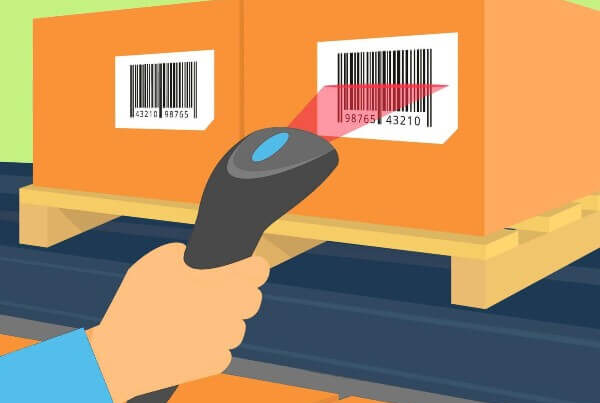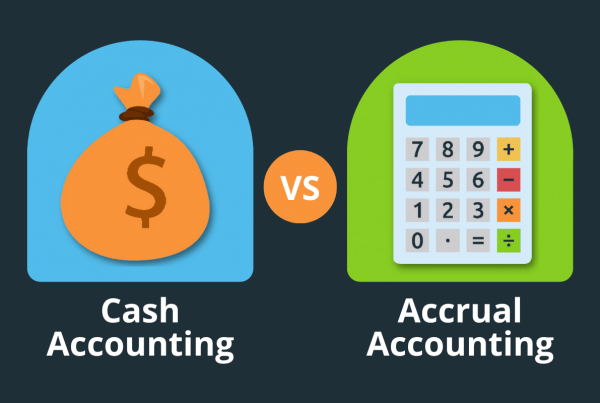
One of the biggest mistakes ecommerce companies make is how the cost of products or Cost of Goods Sold (COGS) is recorded when accounting for inventory purchases. (To view our CEO’s full presentation on this topic, click here).
Many things in life are misunderstood.
For example, some people think you can see the great Wall of China from space, which you can’t.
Or that bulls are enraged by the color red, when in fact they are colorblind.
And lastly, that Twinkies last forever, when in reality they only have a shelf life of 45 days.
Ultimately, commonly misunderstood facts such as these can leave you disappointed in space, feeling a little nervous in a bull-pen, and with a little bit of unexpected indigestion.
Yes, some things are commonly misunderstood, but inventory accounting should NOT be one of them.
COGS – A Commonly Misunderstood Number
One of the most important numbers for an ecommerce business to understand is its COGS. But, in regards to accounting for inventory purchases, COGS is often a very misunderstood number. And the consequences of misunderstanding it are akin to a mix of space disappointment, nervous bull-pen energy, and a very bad case of indigestion. Not good!
One of the common misconceptions that ecommerce companies have regarding COGS is that cash flow and profitability are the same.
They aren’t.
- Cash Flow is the measure of how much a business spends or earns over a period of time.
- Profitability is the degree to which a business yields financial gain relative to its expenses.
Cash flow is affected by things like operating expenses for the business, investments, payments from customers, and payroll for employees.
Businesses with efficient operating systems will see more profitability (income relative to expenses) because they spend less in order to earn more.
Companies that only track their cash flow often lose sight of the importance of tracking their profitability. Consequently, many companies may be unaware that their COGS is incorrect because they’re not focusing on all the necessary aspects of their accounting.
Look into other common accounting mistakes here.
Accounting for Inventory Purchases
Normally, when you’re first starting out and purchasing inventory, you put it in a warehouse or with your 3PL. If this is the case, two things may happen:
- Firstly, you will be shelling out a large initial investment for your inventory.
- Secondly, you may not see all the sales from that inventory for a while.
Recording the cost of inventory at the time of purchase, instead of waiting until they sell it, is one of the biggest mistakes companies make.
Doing this creates irregularities in their income statement and makes them appear to be a risky investment, making it harder for them to potentially exit down the road.
Two Examples of Ways COGS May Be Shown on an Income Statement
Below is an example of how recording cost of goods sold correctly can drastically change key numbers that will, in turn, influence the appearance of your company’s profitability.
Here we view the income statement for “Wooden It Be Lovely Company”.
Example #1 – Incorrect COGS
| Wooden It Be Lovely Company | |||
| Month 1 | Month 2 | Month 3 | |
| Product Sales | $15,900 | $15,900 | $15,900 |
| Cost of Goods Sold | -$30,000 | $0 | $0 |
| Gross Profit | -$14,100 | $15,900 | $15,900 |
| Advertising | -$45 | -$45 | -$45 |
| SEO | -$10 | -$10 | -$10 |
| Platform Fees | -$50 | -$50 | -$50 |
| Salaries/Payments | -$600 | -$600 | -$600 |
| Software Fees | -$45 | -$45 | -$45 |
| Utilities and Access | -$85 | -$85 | -$85 |
| Insurance | -$40 | -$40 | -$40 |
| Operating Income | -$14,975 | $15,025 | $15,025 |
| Interest | -$25 | -$25 | -$25 |
| Taxes | $0 | -$150 | -$150 |
| Net Income | -$15,000 | $14,850 | $14,850 |
This example shows that the company recorded their inventory costs the same month they purchased the inventory instead of waiting until they sold the inventory to record the costs.
As a result, the company recorded a -$15,000 loss in the first month.
However, over the next few months, they sold the inventory but didn’t show any expense against those sales. This creates three problems:
- It makes their income number appear larger than it should be.
- It impairs their ability to make informed decisions, such as:
- Can I hire a new person?
- What can I afford in marketing spend?
- Do I have the funds necessary to open a new or more expensive office?
- It skews the ability to measure profit at all!
Unlike Example #1, the income statement in Example #2 shows their correct income numbers. In other words, they recorded their product costs at the time of sale.
Example #2 – Correct COGS
| Wooden It Be Lovely Company | |||
| Month 1 | Month 2 | Month 3 | |
| Product Sales | $15,900 | $15,900 | $15,900 |
| Cost of Goods Sold | -$10,000 | -$10,000 | -$10,000 |
| Gross Profit | $5,900 | $5,900 | $5,900 |
| Advertising | -$45 | -$45 | -$45 |
| SEO | -$10 | -$10 | -$10 |
| Platform Fees | -$50 | -$50 | -$50 |
| Salaries/Payments | -$600 | -$600 | -$600 |
| Software Fees | -$45 | -$45 | -$45 |
| Utilities and Access | -$85 | -$85 | -$85 |
| Insurance | -$40 | -$40 | -$40 |
| Operating Income | $5,025 | $5,025 | $5,025 |
| Interest | -$25 | -$25 | -$25 |
| Taxes | $0 | $0 | $0 |
| Net Income | $5,000 | $5,000 | $5,000 |
In this scenario, COGS is expensed incrementally over time in alignment with the product that is being sold.
Although they are the exact same company, income numbers on the second income statement appear to be more stable.
A prospective buyer would find the second company to be a more attractive investment.
Pros and Cons of These Methods
If you have been doing things as shown in the first scenario, don’t despair! There actually are a few benefits.
Firstly, strategies such as this can be useful because it is a good indicator of cash coming in and cash going out.
Secondly, businesses experience the cash cycle in a very significant way and this helps to see those cycles clearly.
Moreover, ecommerce businesses often take advantage of seasonal sales or buying in bulk to cut down on shipping rates, which reduces their landed costs. As a result, they are storing inventory over time, so they have a long, drawn-out cash cycle.
However, although it shows us the movement of cash, it completely skews profitability. Certainly, this technique should only be used for cash-flow analysis.
In conclusion, the second scenario shows scaling at a more predictable rate and, therefore, it is a safer bet. It also gives a much better idea of profitability, which allows you to accurately answer the questions we asked above:
- Can I hire a new person?
- What can I afford in marketing spend?
- Do I have the funds necessary to open a new or more expensive office?
For more information, read Your Roadmap for Good Inventory Accounting.
How Inventory Purchases are Calculated
The formula for calculating inventory purchases is:
- (Ending Inventory – Beginning Inventory) + COGS = Inventory Purchases
The accuracy of this calculation depends on proper inventory counts at the end of each reporting period, so keeping track of inventory is essential to accounting for inventory purchases.
You’ll likely need to adjust your general ledger annually after doing a physical inventory count. This allows you to address mistakes and investigate where discrepancies occurred.
For more information, read Causes of Stock Discrepancies | Why Your Inventory Count is Off.
Accounting for Inventory: Journal Entries
Understanding the behind-the-scenes accounting helps us better see what is actually happening when we buy and sell inventory. Let’s take a look at the journal entries that are made for both the purchase and sale of inventory.
But first let’s take a moment to discuss journal entries themselves.
- Journal entry for inventory: A record in your ledger that tracks inventory transactions.
Journal entries can be recorded periodically or perpetually. Periodic journal entries are ideal for businesses that move small quantities of inventory in each accounting period. Perpetual journal entries are usually electronic and are recorded for every sale or every time new inventory is purchased. The perpetual method is really only possible if you’re using inventory management software, such as Finale or Cin7.
Okay, on to the journal entries themselves.
Purchases (Cash and on Account)
| Debit | Credit | Account | |
| Inventory | $XXX | Asset | |
| Accounts Payable | $XXX | Liability |
| Debit | Credit | Account | |
| Inventory | $XXX | Asset | |
| Cash | $XXX | Asset |
Sales (Recognizing COGS and Revenue)
| Debit | Credit | Account | |
| COGS | $XXX | Expense | |
| Inventory | $XXX | Asset |
| Debit | Credit | Account | |
| Cash | $XXX | Asset | |
| Sales Revenue | $XXX | Income |
Above all, these entries make it easy to see that you are recognizing both COGS and sales revenue at the same time. Notice that the first entries upon purchase of your inventory don’t list either COGS or sales revenue.
On a side note, if you’re curious and want to dive deeper in journal entries, you can also read how to handle sales tax journal entries.
Recap of When to Record COGS for Accurate Accounting for Inventory Purchases
In conclusion, be careful WHEN you record COGS.
Furthermore, when accounting for inventory purchases, only include the expense on your income statement as you sell the product the expense relates to! Refer back to Examples #1 and #2 to see the exact same company with the accounting done incorrectly and correctly.
Remember, recording COGS wrong not only impairs your ability to measure the profitability of your company and make informed decisions, but it also impairs the ability of others to see the true value of your company!
What is the key take-away from this article? Above all, remember to correctly record your COGS and don’t eat expired Twinkies.
You’re welcome!
If you have reached the point where you’re ready to get some help with your inventory accounting specifically or your ecommerce accounting in general, let us know. We’re happy to help!



